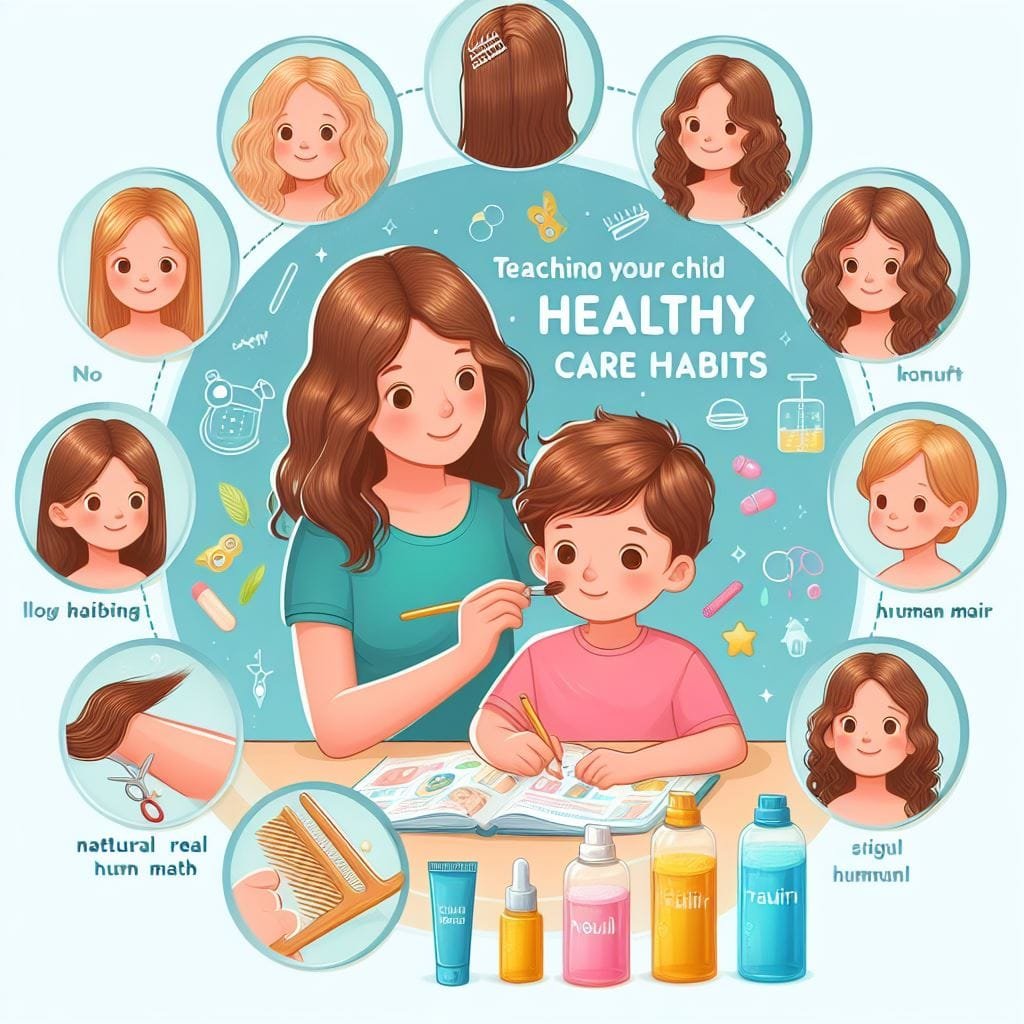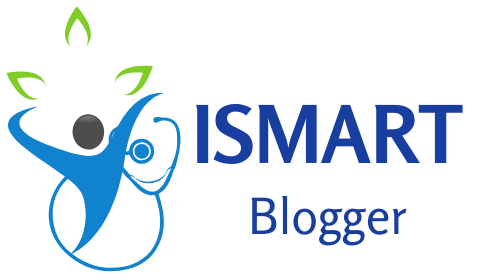Introduction
When it comes to our little ones, we all want the best for them. From their nutrition to their education, we strive to give them every advantage in life.
But what about their hair? Yes, you read that right – their hair!
Teaching your child healthy hair care habits may seem like a trivial matter, but it holds great importance. Just like any other aspect of their well-being, maintaining good hair health from an early age can have numerous benefits for both their appearance and overall self-confidence.
The Importance of Teaching Children Healthy Hair Care Habits
Instilling healthy hair care habits in your child is crucial for several reasons. Firstly, it teaches them responsibility and self-care. By showing them how to properly take care of their tresses, you are equipping them with skills that will stay with them throughout their lives.
They will understand the importance of hygiene and grooming as they grow older. In addition to promoting good hygiene practices, teaching children about proper hair care ensures they develop a positive body image.
When children have vibrant and healthy-looking hair, they feel more confident and comfortable in their skin. This aids in building self-esteem and fosters a positive attitude towards personal appearance.
Moreover, by teaching your child about the significance of taking care of their locks at an early age, you are setting the foundation for long-term hair health. Establishing the right routines early on helps prevent potential issues such as dryness, breakage, or even scalp problems later in life.

The Benefits of Maintaining Good Hair Health from an Early Age
Maintaining good hair health from a young age offers several long-lasting benefits for your little one’s crowning glory. Firstly, it promotes strong and resilient strands that are less prone to breakage or damage caused by everyday activities.
This means fewer tears and tantrums during brushing sessions! Additionally, when children adopt healthy hair care habits, they are less likely to encounter common scalp issues such as dandruff or itchiness.
A clean and well-nourished scalp not only feels comfortable but also supports optimal hair growth. It sets the stage for a luscious and voluminous head of hair as they continue to grow.
Developing good hair care habits early on can save you time and money in the long run. By teaching your child how to properly care for their tresses, you can avoid costly visits to the salon or complications that may require professional intervention.
Investing in preventive measures now means less stress down the line. Now that we’ve established why teaching your child healthy hair care habits is so crucial, let’s dive into the nitty-gritty details of understanding the basics of hair care.
Hair Structure and Growth Cycle
Understanding the structure of hair is crucial when it comes to teaching your child healthy hair care habits. Hair is made up of three layers: the cuticle, cortex, and medulla. The outermost layer, the cuticle, acts as a protective shield for the inner layers.
It consists of overlapping scales that should lie flat for smooth and shiny hair. However, improper care can cause these scales to lift, leading to frizzy and dull-looking locks.
The growth cycle of hair consists of three phases: anagen, catagen, and telogen. During the anagen phase, which lasts about 2-6 years in children, hair grows actively from its root.
In the catagen phase (~2 weeks), growth stops as the follicle shrinks. During the telogen phase (~3 months), old hairs shed naturally to make way for new growth.
Different Hair Types and Their Specific Needs
It’s essential to recognize that different individuals have different hair types, each with its unique set of characteristics and needs. Understanding your child’s hair type will help you tailor their hair care routine accordingly.
Straight hair tends to be naturally smooth and shiny but can be prone to becoming greasy quickly due to increased oil production from the scalp. Regular shampooing with a gentle cleanser is necessary for maintaining cleanliness without stripping away too much natural oil.
Curly or wavy hair usually tends towards dryness since it’s more difficult for sebum (the scalp’s natural oil) to travel down each strand due to its coiled nature. Moisturizing shampoos designed specifically for curly or wavy locks are ideal as they provide extra hydration while being gentle on delicate curls.
Textured or kinky hair requires extra moisture as it often appears dry due to its tightly coiled structure that hinders sebum distribution along the hair shaft. Regular deep conditioning treatments and the use of leave-in conditioners can help replenish moisture and prevent breakage for healthier-looking strands.
Understanding these basic concepts about hair structure, growth cycles, and hair types will serve as a solid foundation for your child’s healthy hair care routine. By tailoring their routine to their specific needs, you’ll be able to provide the proper care necessary for maintaining luscious, vibrant locks.
Choosing the Right Shampoo and Conditioner for Your Child’s Hair Type
Understanding your child’s hair type
Before delving into the world of hair care products, it’s important to identify your child’s hair type. Is it straight, wavy, curly, or kinky? Each hair type has its unique needs and requires specific care.
Straight hair tends to get oily faster, while curly or kinky hair may be prone to dryness. Knowing your child’s natural hair texture will help you choose the most suitable shampoo and conditioner.
Ingredients to Look for and Avoid in Kids’ Hair Products
When it comes to selecting the right shampoo and conditioner for your little one, it’s essential to pay attention to the ingredients. Look for gentle, nourishing ingredients such as natural oils (coconut oil, argan oil) that provide moisture without weighing down the hair. Avoid products that contain sulfates, parabens, or artificial fragrances as these can strip away natural oils and irritate sensitive scalps.
Tips for Proper Shampooing and Conditioning Techniques
The way you shampoo and condition your child’s hair can make a big difference in its overall health. To start, wet their hair thoroughly with lukewarm water.
Apply a small amount of shampoo onto their scalp and gently massage using your fingertips. Rinse thoroughly until no traces of shampoo remain.
Next up is conditioning! Take a dime-sized amount of conditioner (more if needed) and apply it along the length of their strands.
Use a wide-toothed comb or your fingers to distribute the product evenly through their hair from roots to ends. Let it sit for a minute or two before rinsing well.
Brushing and Detangling Techniques to Prevent Damage
Brushing and detangling can be a tricky task, especially if your child has long or tangled hair. To minimize damage, start by selecting the right brush or comb for their hair texture. For straight or wavy hair, a soft-bristle brush is ideal.
Curly or kinky hair benefits from a wide-toothed comb or detangling brush. When tackling knots and tangles, be gentle!
Begin at the ends of the hair and work your way up slowly, using short strokes to avoid unnecessary pulling or breakage. If there are stubborn knots, try applying a leave-in conditioner or detangling spray to make the process easier.
Nourishing the scalp and promoting healthy growth
Importance of a clean scalp and preventing dandruff in children
Maintaining a clean and healthy scalp is crucial for your child’s overall hair health. It not only prevents discomfort but also helps in preventing dandruff, which can be quite common in children. Regular cleansing of the scalp removes excess oil, dirt, and dead skin cells that can accumulate and lead to flakiness.
These flakes can be embarrassing for your child, who may feel self-conscious about them. By keeping the scalp clean, you reduce the chances of dandruff occurring.
Tips for maintaining a healthy scalp through regular cleansing
To maintain a healthy scalp, it’s important to establish a regular cleansing routine for your child’s hair. Depending on their hair type and activity level, you may need to wash their hair two to three times a week.
Use a gentle shampoo specifically formulated for children that is free from harsh chemicals or sulfates. When washing their hair, massage the shampoo into their scalp using your fingertips in circular motions.
This stimulates blood circulation and helps remove any buildup on the scalp. Rinse thoroughly with lukewarm water to ensure all product residue is washed away.
Natural remedies to combat dandruff if it occurs
If your child does develop dandruff despite regular cleansing, there are natural remedies that can help combat it effectively. One such remedy is applying diluted apple cider vinegar directly onto the scalp after shampooing.
The acetic acid present in apple cider vinegar helps restore pH balance while its antimicrobial properties fight against fungal growth that may contribute to dandruff. Another natural remedy involves applying coconut oil infused with tea tree oil onto the scalp before bedtime.
Tea tree oil has antifungal and antibacterial properties that can help control dandruff-causing yeast. Leave the mixture on overnight and rinse it off the next morning during their regular hair wash routine.
Promoting healthy hair growth through proper nutrition
Essential nutrients that support strong, shiny hair
Proper nutrition plays a vital role in promoting healthy hair growth for your child. Certain essential nutrients are crucial to keeping their locks strong and shiny. One such nutrient is biotin, which is found in foods like eggs, nuts, and dairy products.
Biotin helps strengthen the hair shaft, reducing breakage and promoting overall hair health. Omega-3 fatty acids are another important nutrient for healthy hair growth.
They can be found in fatty fish like salmon or through plant-based sources like flaxseeds or chia seeds. Omega-3 fatty acids nourish the scalp and support healthy hair follicles, leading to stronger and more resilient strands.
Foods rich in these nutrients that can be incorporated into your child’s diet
Incorporating nutrient-rich foods into your child’s diet can ensure they receive the necessary elements for healthy hair growth. Include eggs as a part of their breakfast routine or incorporate them into dishes like omelets or scrambled eggs. Encourage snacking on nuts like almonds or walnuts instead of sugary treats as they not only provide biotin but also contain other beneficial vitamins and minerals.
For omega-3 fatty acids, try incorporating grilled salmon into their meals once a week or sprinkling ground flaxseeds onto cereals or yogurt bowls for added nutritional value. Adding variety to their diet with fruits rich in antioxidants, such as berries, can also contribute to overall scalp health and promote good-quality hair growth.
Styling tips for minimizing damage
Avoiding excessive heat styling tools on young children’s delicate hair
Excessive heat styling tools can cause significant damage to your child’s delicate hair. It’s best to avoid using them altogether or limit their use as much as possible.
Heat can weaken the hair shaft, causing breakage and frizz. Instead of relying on heat styling, embrace more natural styling options that are gentle on their hair.
Alternatives to heat styling, such as air-drying or braiding
Air drying is a great alternative to heat styling, especially during warmer months. After washing your child’s hair, gently squeeze out excess water with a towel and let their hair dry naturally.
This helps preserve moisture and minimizes damage caused by excessive heat exposure. Another non-heat styling option is braiding.
Braids not only keep the hair in place but also protect it from environmental factors that can lead to damage. Opt for loose braids instead of tight ones to avoid pulling or tugging on the roots.
How to use heat protectant products when necessary
In situations where you must use heat styling tools, such as for special occasions, it is essential to apply a heat protectant product beforehand. Look for a lightweight spray or serum specifically designed for children’s hair that provides thermal protection. Apply it sparingly from roots to ends before using any heated tool and always follow the instructions provided with the product.
Conclusion
By teaching your child healthy hair care habits from an early age, you empower them with knowledge that will benefit them throughout their lives. Maintaining a clean scalp through regular cleansing helps prevent dandruff and discomfort while promoting healthy growth.
Proper nutrition ensures that their hair receives essential nutrients for strength and shine. Additionally, minimizing damage through conscious styling choices protects their delicate strands from harm caused by excessive heat or tension on the roots.
Embracing natural alternatives like air-drying and gentle hairstyles reduces the risk of breakage and maintains overall hair health. As you guide your child in developing these habits, remember that instilling a positive attitude towards hair care can make the journey enjoyable for both of you.
Celebrate their unique hair type and embrace the beauty of diversity. With your guidance and love, their hair will flourish, and they will grow up with healthy, confident tresses to match their vibrant personalities.





